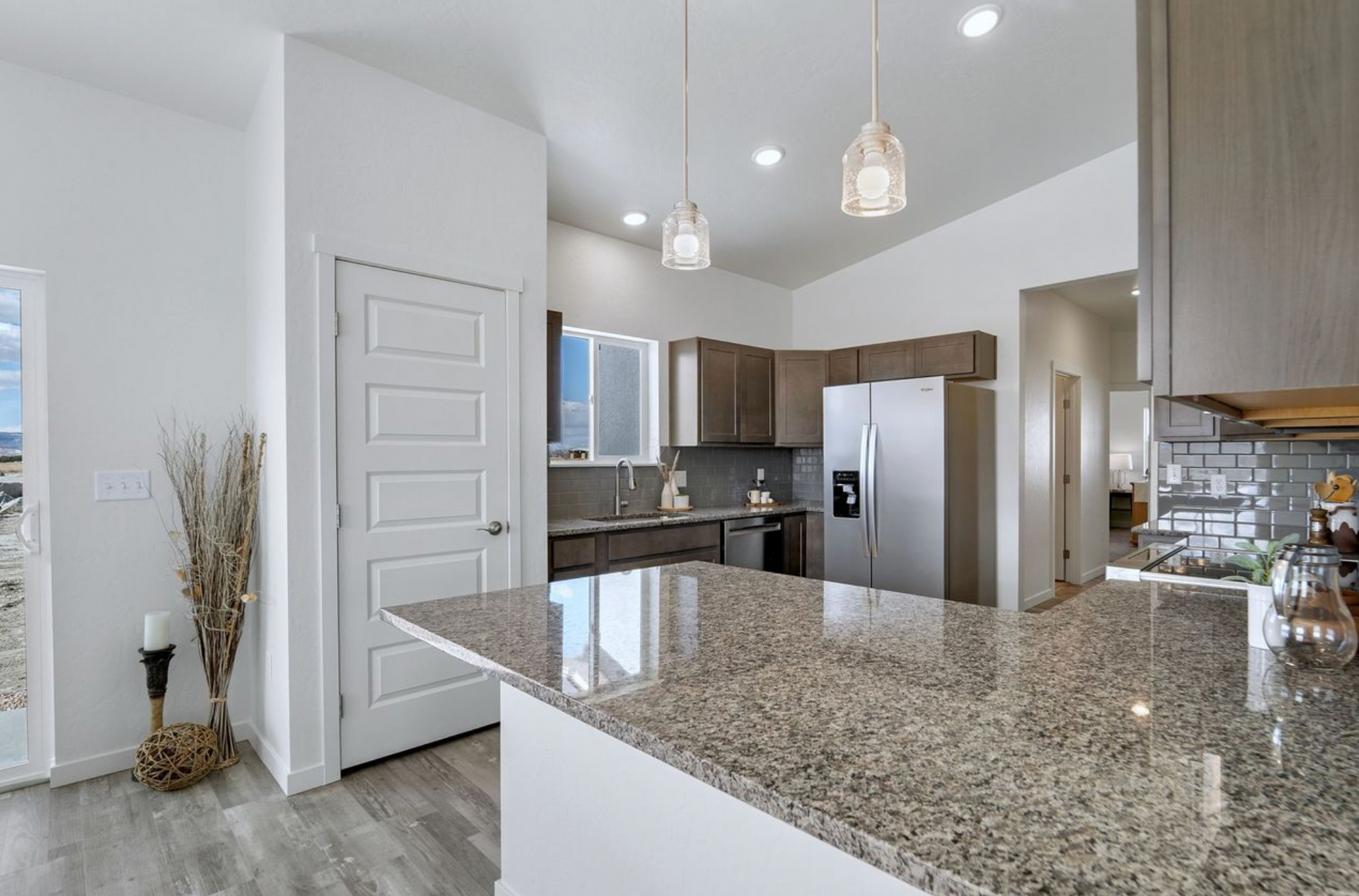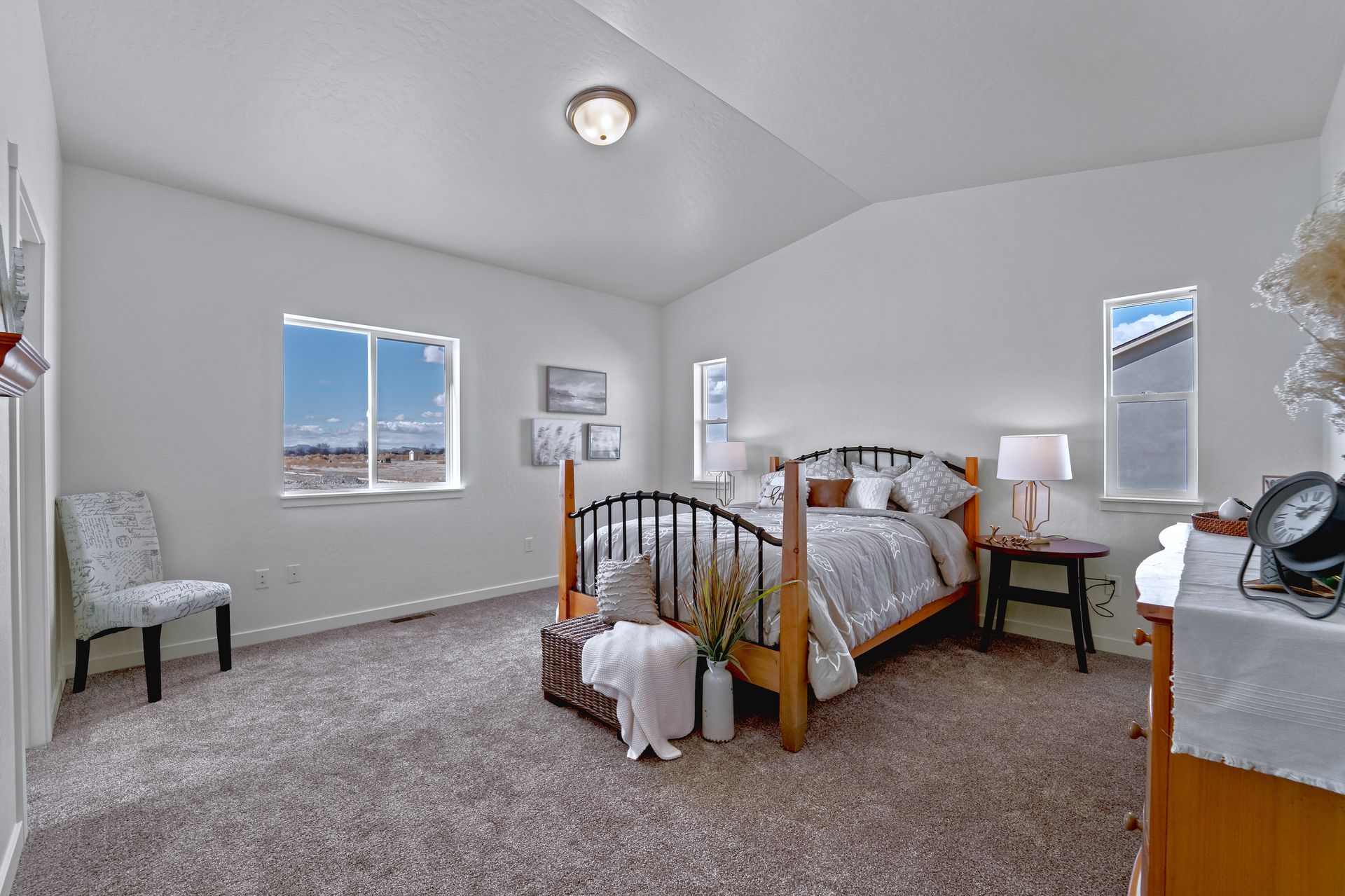How To Make Your Home More Energy Efficient

At Senergy Builders, our mission is to help make the Western Slope as sustainable as possible in shifting gears towards energy efficiency. Of course, you can always contact us for new home construction, but there are also other ways to move towards the path of sustainable living.
In this blog, let us guide you through various ways you can make your home more energy efficient.
Upgrade Your Lighting
The lighting systems in buildings play a crucial role not only in enhancing visibility but also in consuming substantial amounts of energy. Traditional lighting technologies such as incandescent, halogen, HID (High-Intensity Discharge), or T12 fluorescent lights are notorious for their inefficiency. They not only drain resources but also lead to higher operational costs.
By transitioning to modern, energy efficient alternatives like LED (Light Emitting Diode) lighting, building owners and managers can unlock significant savings. LEDs consume up to 75% less energy and last significantly longer than incandescent bulbs, making them a cost-effective choice for lighting your home. LEDs are renowned for their longevity and lower energy consumption, offering a compelling return on investment through reduced maintenance and electricity bills.
Conduct a Home Energy Audit
A home energy audit is a crucial first step towards understanding your home's energy usage and identifying areas for improvement. You can conduct a basic audit yourself by inspecting doors, windows, insulation, and appliances for air leaks or inefficiencies.
Alternatively, professional energy auditors can provide comprehensive assessments using specialized tools to pinpoint energy wastage and recommend tailored solutions.
Upgrade to Energy Efficient Appliances
Appliances such as refrigerators, washing machines, dishwashers, and HVAC systems are major contributors to household energy consumption. Consider replacing older, inefficient appliances with ENERGY STAR certified models that meet strict energy efficiency guidelines. These appliances use significantly less energy and water without sacrificing performance, resulting in long-term savings on utility bills.
Some of the appliances we include in a Senergy Builders home include:
Professional Classic® Power Direct Vent gas water heaters offer
- efficiency that is ENERGY STAR® rated (50-Gallon model only)
- a self-diagnostic system with electronic gas control for improved monitoring and service
- utmost performance and low emissions
- a protective control system that disables the heater in the presence of flammable vapor accumulation
- a two pipe system in which one pipe pulls in outside air for combustion and the other exhausts combustion gasses
- Flexible venting options that are long (up to 100 feet)
- Long-lasting tank protection
- High altitude compliancy
- 6-Year limited tank and parts warranty, with ProtectionPlusTM the 6-year limited tank warranty becomes 10-year
Amana Brand Premium Gas Furnace advantages:
- A high efficiency rating up to 97% AFUE
- Modulating and variable-speed models
- Compatible with smart thermostats and HVAC apps
- Stainless-steel, dual-diameter tubular primary heat exchanger and secondary heat exchanger
- Exclusive convertible technology (select models)
- Durable post-painted finish
- Corrosion-resistant vent blower
- Electronic ignition control
- Multi- or variable- speed blowers
- Fully-insulated cabinet

Improve Insulation and Air Sealing
Proper insulation and air sealing are essential for maintaining a comfortable indoor environment and reducing heating and cooling costs. Inspect your home's insulation levels in attics, walls, and floors, and consider adding more insulation where necessary. Seal gaps and cracks around windows, doors, and ductwork with caulking or weather-stripping to prevent air leakage and improve energy efficiency.
Upgrade Windows and Doors
Windows and doors are potential sources of heat loss and gain in a home. Upgrade to energy-efficient windows with double or triple-pane glass, low-emissivity coatings, and insulated frames to reduce heat transfer and improve comfort. Install weather-stripping around doors and windows to minimize drafts and enhance insulation.
Install Programmable Thermostats
A programmable thermostat allows you to set heating and cooling schedules based on your daily routines, optimizing energy use when you're at home and reducing it when you're away or asleep. Smart thermostats go a step further by learning your habits and adjusting settings automatically to maximize comfort and savings.
Harness Renewable Energy Sources
Consider integrating renewable energy sources such as solar panels or small wind turbines to generate clean electricity for your home. While these investments require upfront costs, they can lead to substantial long-term savings on electricity bills and reduce your carbon footprint.
Solar energy production does not release greenhouse gasses or other harmful pollutants into the atmosphere, unlike conventional energy sources such as coal, oil, and natural gas. Because of this, solar energy helps mitigate climate change and air pollution, safeguarding public health and the environment.
Also, solar energy is not dependent on centralized power grids and volatile energy markets
Practice Energy Efficient Habits
Simple changes in daily habits can also contribute to energy savings. Turn off lights, appliances, and electronics when not in use. Use cold water for washing clothes whenever possible. Air dry dishes instead of using the dishwasher's drying cycle. These small adjustments can add up to significant energy savings over time.
Consider Home Energy Efficiency Certifications
Seek certifications such as LEED (Leadership in Energy and Environmental Design) or
ENERGY STAR for Homes, which provide third-party verification of your home's energy performance and sustainability features. These certifications not only validate your efforts but also enhance the resale value and marketability of your home.
Educate Yourself and Others
Lastly, educate yourself and your family members about the importance of energy efficiency and sustainable living practices. Encourage everyone to participate in conserving energy and reducing waste, fostering a culture of environmental responsibility within your household.
Choose Senergy Today
Making the Western Slope greener and more sustainable one energy efficient home at a time, put your trust in us for your next construction project.
You might also like



